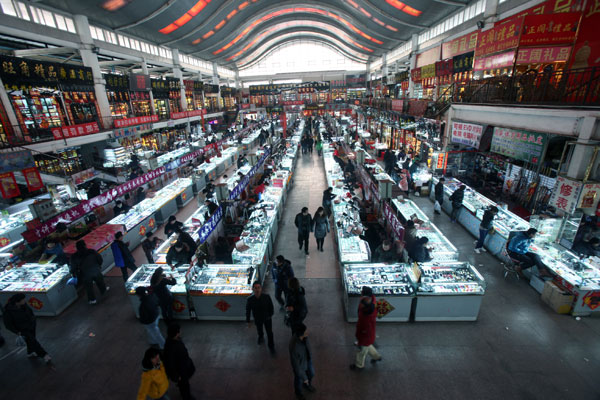Buying luxury items is a brand-new success story
Updated: 2012-02-20 10:22
By Tang Yue (China Daily)
|
||||||||
Designer labels are in fashion and easier for domestic customers to purchase now than at any time before, Tang Yue reports from Tianjin and Beijing.
Zhang Xiuhua ran a stall at the Exotic Cargo Market in Tianjin when it was at its peak.
"I had to get up at 3 am just to get a good booth on weekends," she recalled.
"The street was packed with customers from everywhere. It attracted far more people than any department store."
That was in the early to mid-1990s, when the market was the go-to place in North China for secondhand clothes and other goods smuggled from overseas.
By the end of the decade, the glory days were already over; crackdowns by customs authorities had severed supply chains, while brand-new foreign products were becoming readily available throughout the mainland.
Yet, as the Tianjin market declined, demand among Chinese shoppers for imported - especially high-end - goods has only grown stronger, with experts predicting that the country will this year overtake Japan as the world's largest luxury market.
More than 100 billion yuan ($15.88 billion) was spent on luxury products on the mainland last year, a year-on-year increase of about 25 percent, according to data released by management consultants Bain & Co.
The figure is a far cry from the 5 billion yuan recorded in 1998, when trade at the Exotic Cargo Market was starting to wind down.

 Relief reaches isolated village
Relief reaches isolated village
 Rainfall poses new threats to quake-hit region
Rainfall poses new threats to quake-hit region
 Funerals begin for Boston bombing victims
Funerals begin for Boston bombing victims
 Quake takeaway from China's Air Force
Quake takeaway from China's Air Force
 Obama celebrates young inventors at science fair
Obama celebrates young inventors at science fair
 Earth Day marked around the world
Earth Day marked around the world
 Volunteer team helping students find sense of normalcy
Volunteer team helping students find sense of normalcy
 Ethnic groups quick to join rescue efforts
Ethnic groups quick to join rescue efforts
Most Viewed
Editor's Picks

|

|

|

|

|

|
Today's Top News
Health new priority for quake zone
Xi meets US top military officer
Japan's boats driven out of Diaoyu
China mulls online shopping legislation
Bird flu death toll rises to 22
Putin appoints new ambassador to China
Japanese ships blocked from Diaoyu Islands
Inspired by Guan, more Chinese pick up golf
US Weekly

|

|







